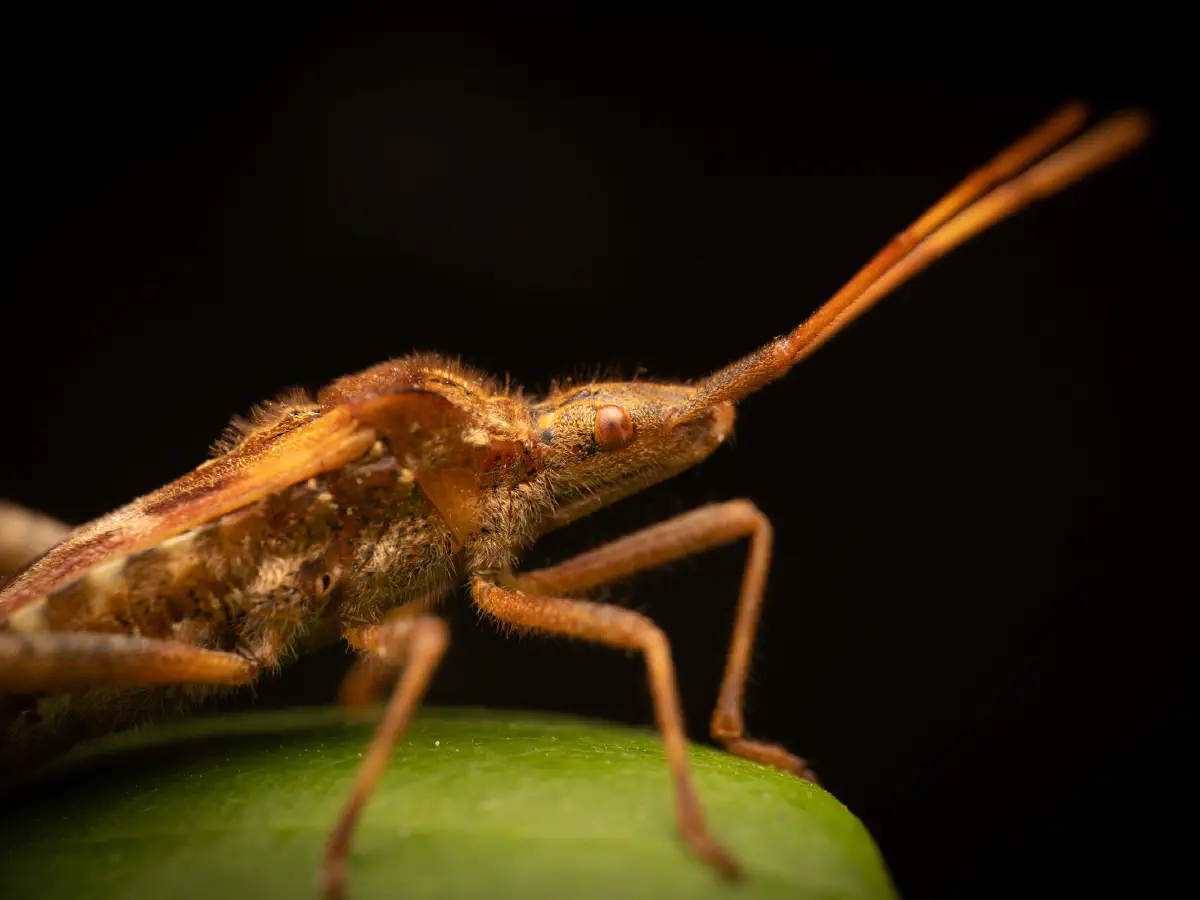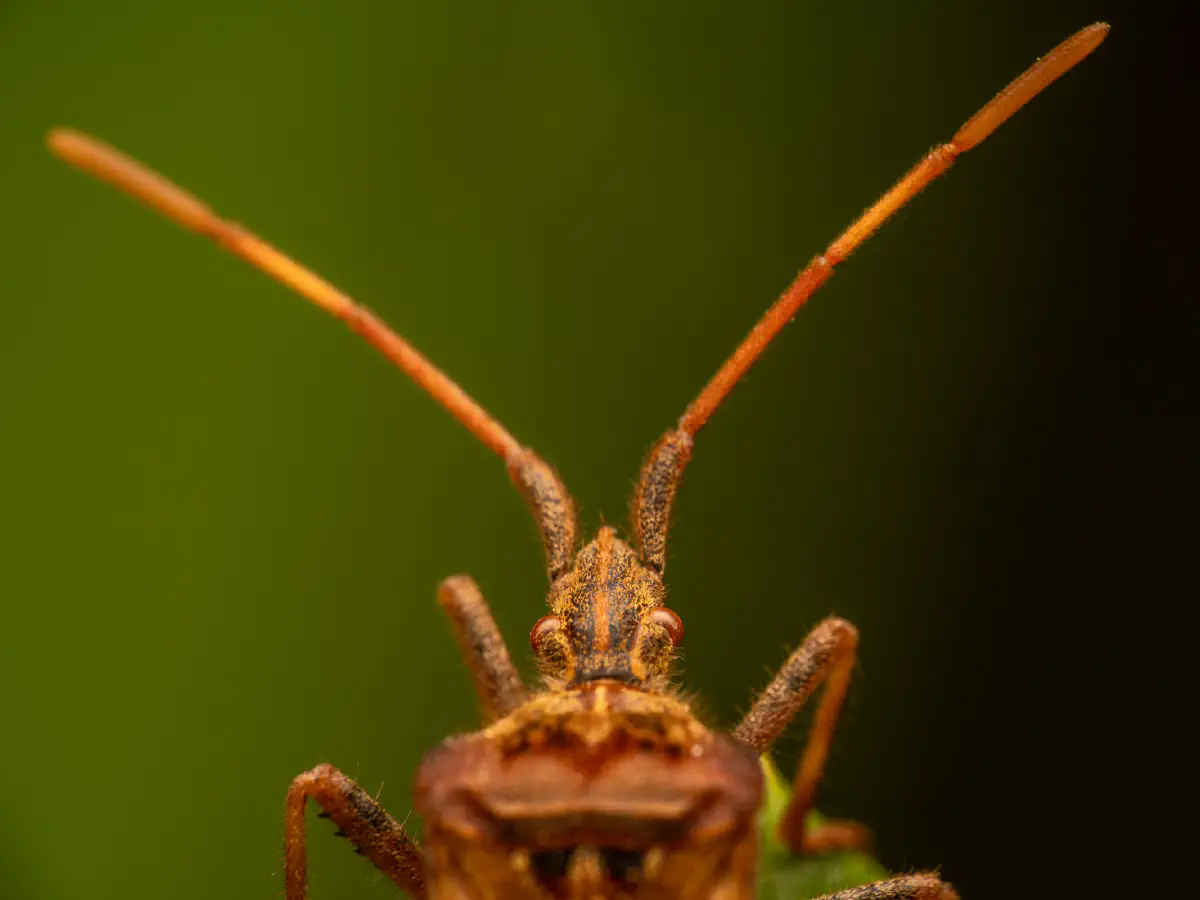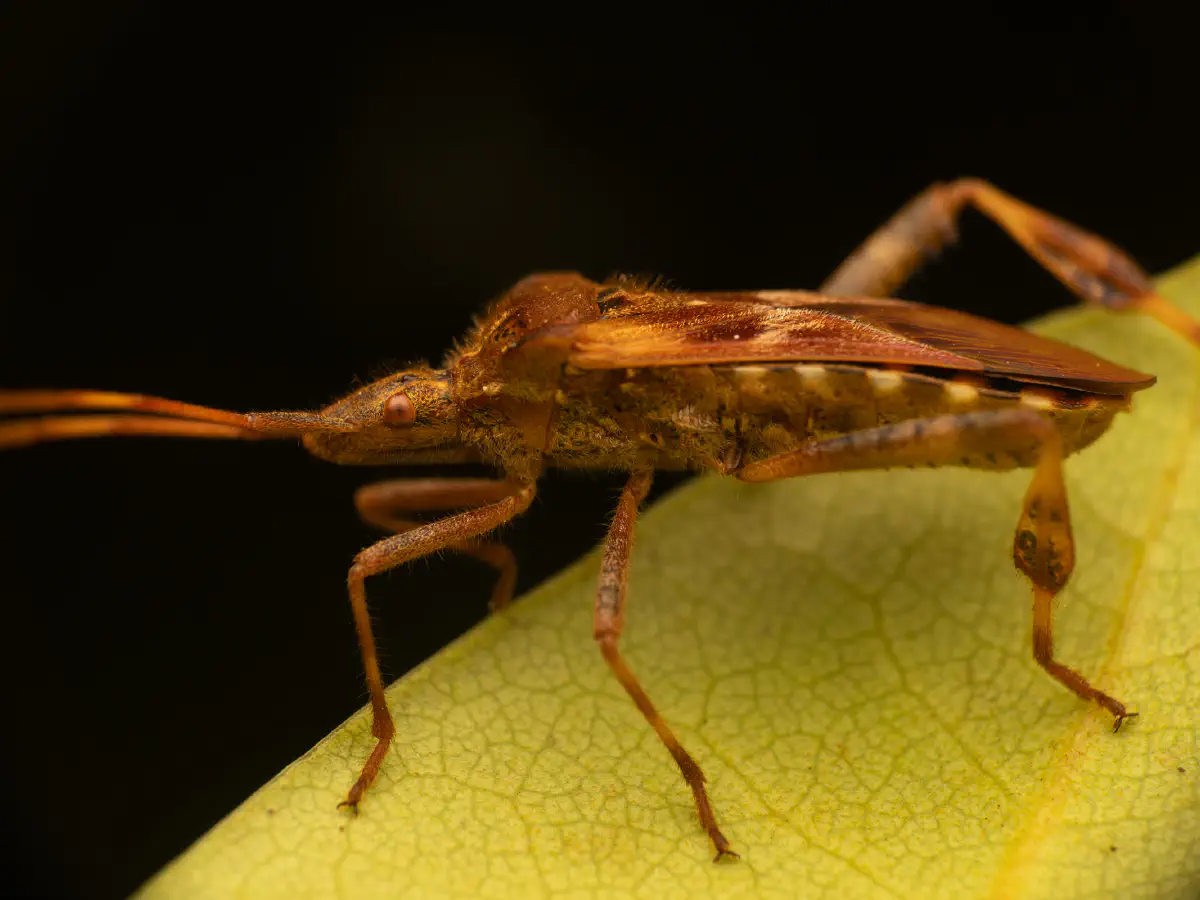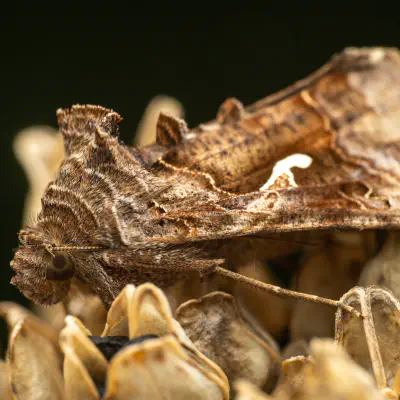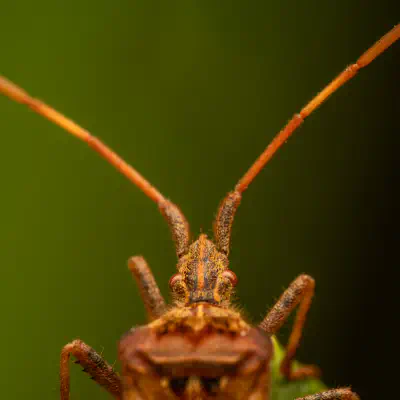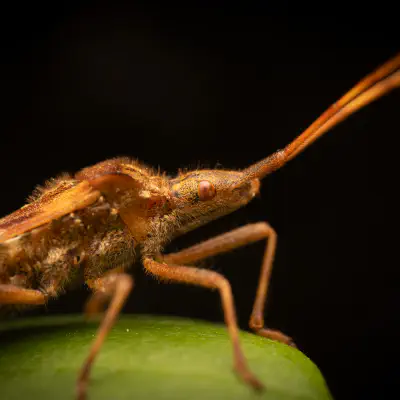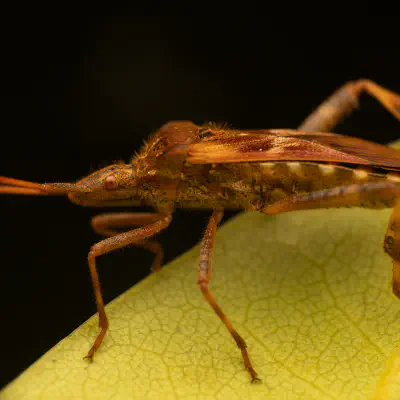The average length is 16–20 millimetres (0.63–0.79 in) with males being smaller than females. They are able to fly, making a buzzing noise when airborne. Western conifer seed bugs are somewhat similar in appearance to the wheel bug Arilus cristatus and other Reduviidae (assassin bugs). These, being Cimicomorpha, are not very closely related to leaf-footed bugs as Heteroptera go; though both have a proboscis, but only the assassin bugs bite even if unprovoked, and L.
occidentalis like its closest relatives can be most easily recognized by the expanded hindleg tibiae and by the alternating light and dark bands which run along the outer wing edges on the flaring sides of the abdomen. Their primary defense is to emit an unpleasant-smelling alarm pheromone; however, if handled roughly they will stab with their proboscis, though they are hardly able to cause injury to humans as it is adapted only to suck plant sap
and not, as in the assassin bugs, to inject venom.
